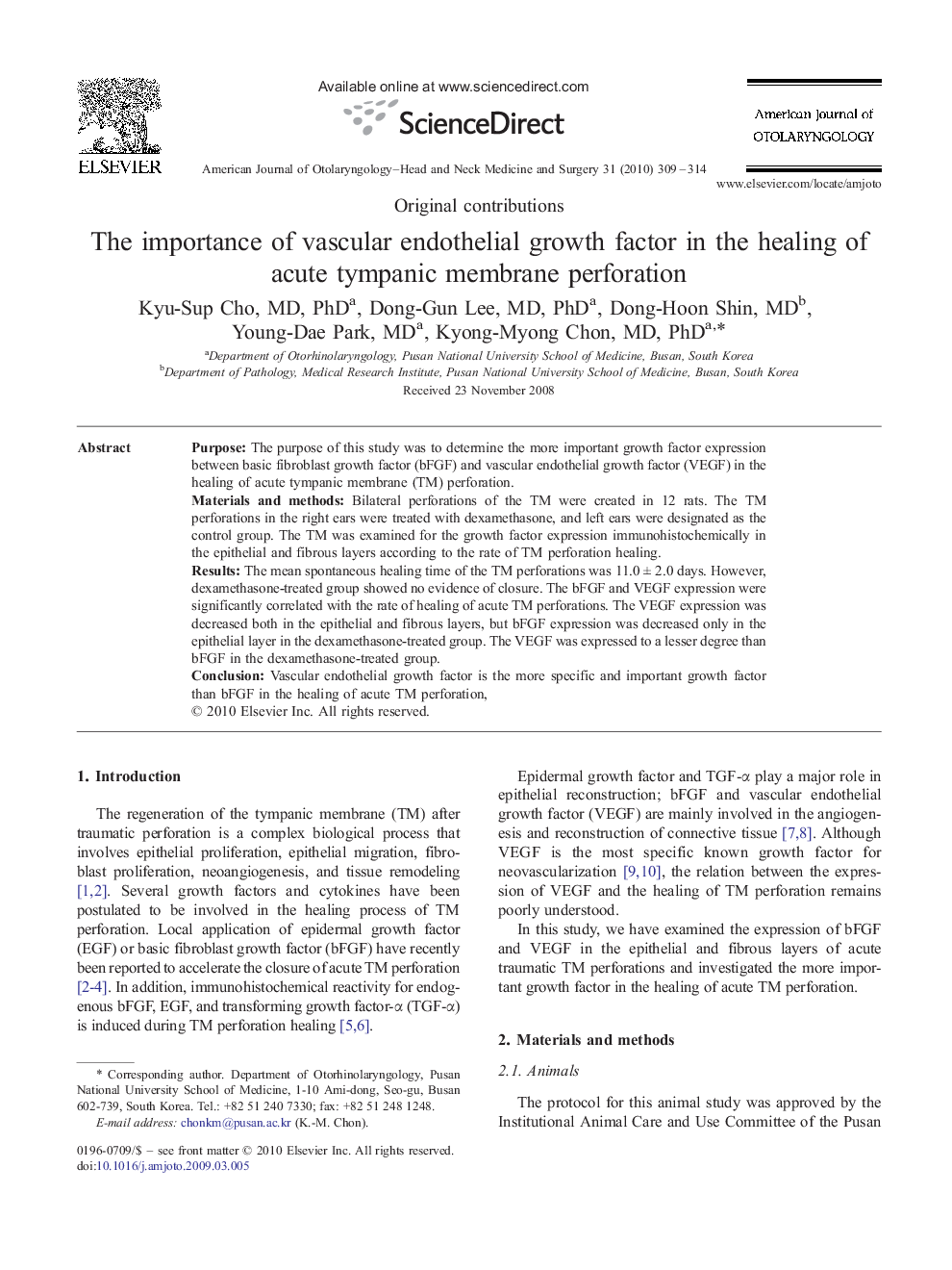| Article ID | Journal | Published Year | Pages | File Type |
|---|---|---|---|---|
| 4103980 | American Journal of Otolaryngology | 2010 | 6 Pages |
PurposeThe purpose of this study was to determine the more important growth factor expression between basic fibroblast growth factor (bFGF) and vascular endothelial growth factor (VEGF) in the healing of acute tympanic membrane (TM) perforation.Materials and methodsBilateral perforations of the TM were created in 12 rats. The TM perforations in the right ears were treated with dexamethasone, and left ears were designated as the control group. The TM was examined for the growth factor expression immunohistochemically in the epithelial and fibrous layers according to the rate of TM perforation healing.ResultsThe mean spontaneous healing time of the TM perforations was 11.0 ± 2.0 days. However, dexamethasone-treated group showed no evidence of closure. The bFGF and VEGF expression were significantly correlated with the rate of healing of acute TM perforations. The VEGF expression was decreased both in the epithelial and fibrous layers, but bFGF expression was decreased only in the epithelial layer in the dexamethasone-treated group. The VEGF was expressed to a lesser degree than bFGF in the dexamethasone-treated group.ConclusionVascular endothelial growth factor is the more specific and important growth factor than bFGF in the healing of acute TM perforation,
